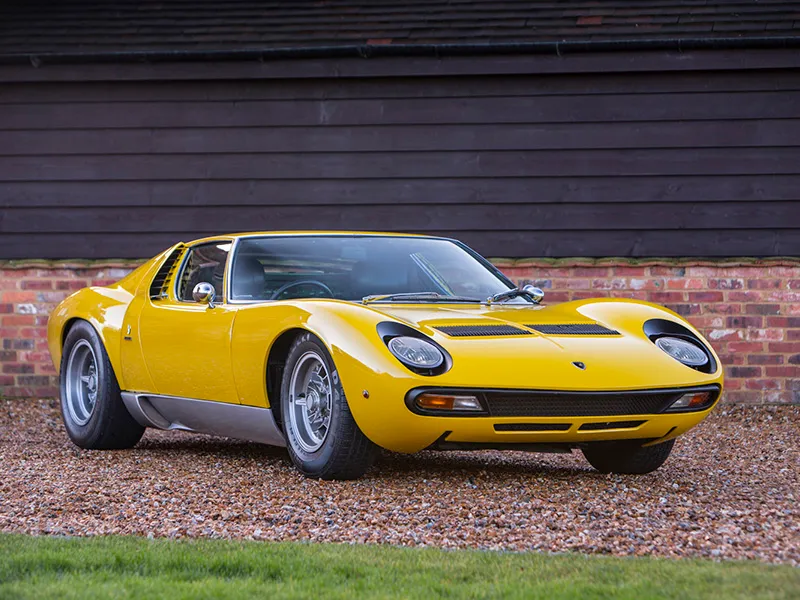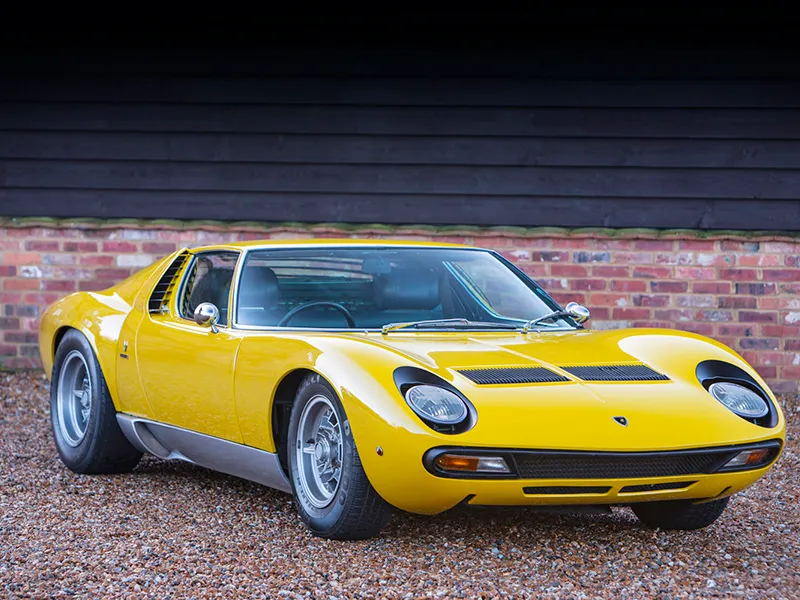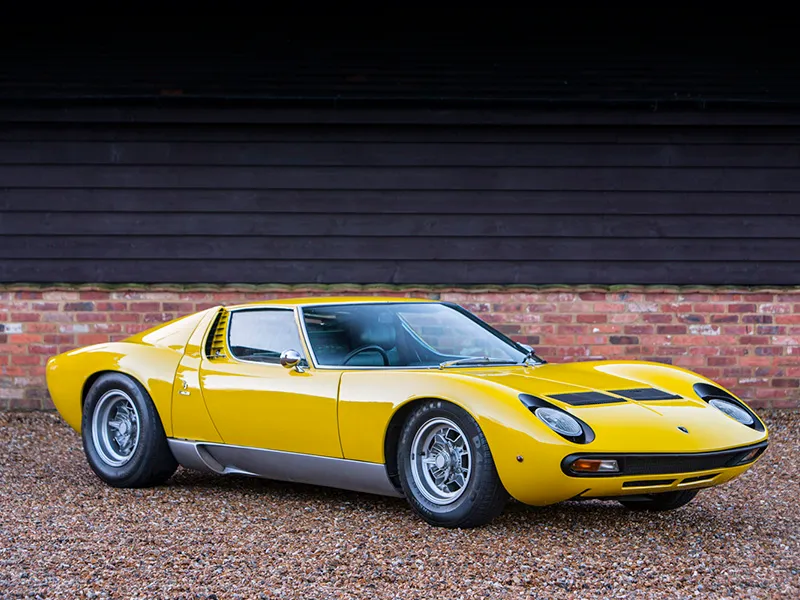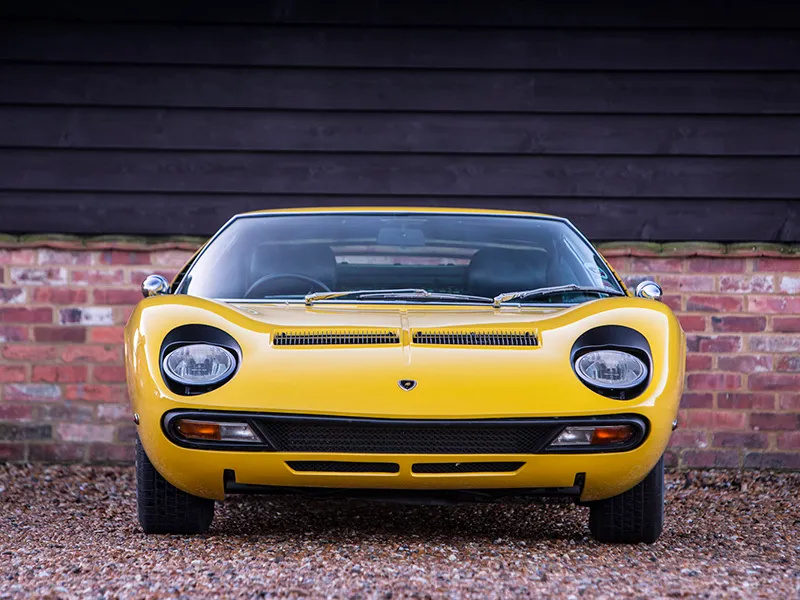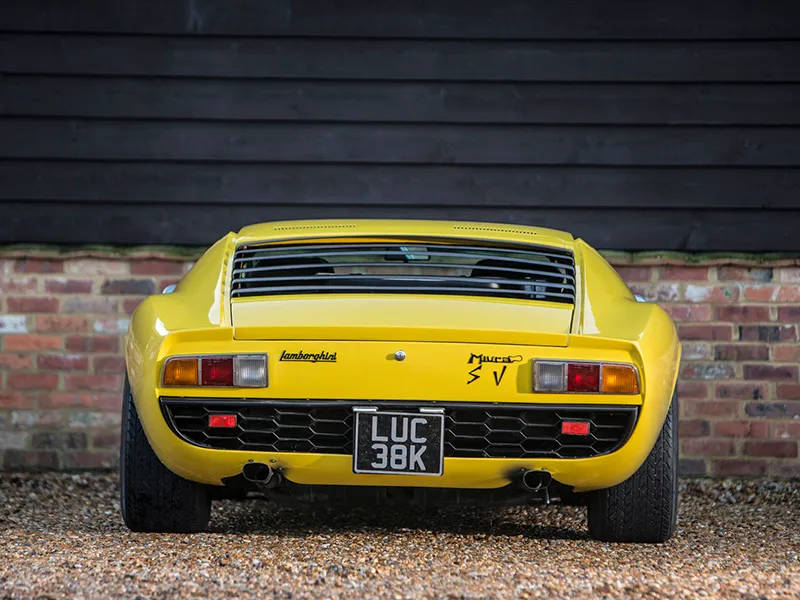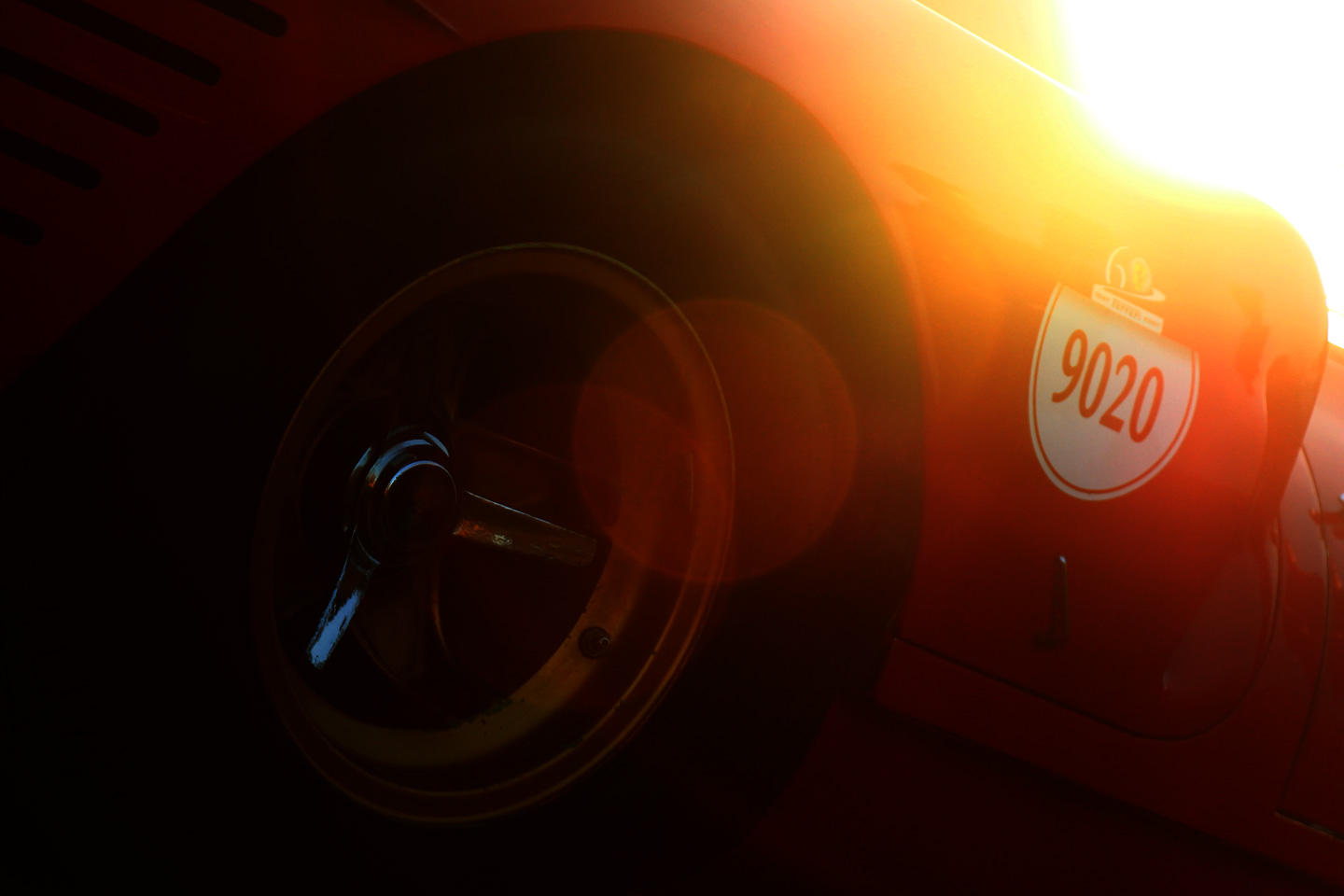Coachwork by Carrozzeria Bertone
Registration no. LUC 38K
Chassis no. 4818
Engine no. 30734
Above is a video the previous owner had made of the car driving in Hong Kong.
'But step back for a minute and work out what makes the Miura so special. In 1966 there was nothing like it. Only racing cars and the obscure little French Bonnet/Matra Djet had mid-mounted engines. Ferrari's road-going mainstay was the traditional front-engined 275GTB. So when tractor magnate Ferruccio Lamborghini stole the attention of the Geneva Salon crowd with the Miura, people were shocked as much by its audacious mechanical layout as they were by its era-defining and stunningly gorgeous styling.' – Classic Cars, July 2004.
Ferruccio Lamborghini's bold challenge to Ferrari had begun in 1964 with the 350GT but it was the arrival of the Miura - arguably the founder of the supercar class - that established Lamborghini as a major manufacturer of luxury sporting cars. Prior to the model's official debut at the 1966 Geneva Salon, Lamborghini cars were respected for their impressive mechanical specifications but they somehow lacked a distinctive persona. All this changed with the arrival of the Miura, named after Don duardo Miura, a famous breeder of fighting bulls. The Miura project first surfaced as a rolling chassis displayed at the 1965 Turin Motor Show but was not expected to become a production reality. Nevertheless, by the time of the Geneva Salon the following year, the first completed car was ready for unveiling to an awe-struck press and public.
The car's technical specification was breathtaking in its sophistication and complexity. Designed by Gianpaolo Dallara, the Miura carried its transversely mounted engine amidships in a box-section platform chassis, the latter clothed in stunning coupé coachwork styled by Bertone's Marcello Gandini. Like the contemporary 400GT, the Miura used the 4.0-litre version of Lamborghini's Giotto Bizzarrini-designed four-cam V12. With 350bhp available, the Miura was capable of shattering performance, a top speed of 180mph being claimed. Production examples were independently tested at more than 170, confirming that the Miura was the world's fastest production car. Early in 1968, after the 125th car had been completed, the steel used in the chassis was increased from 0.9 to 1mm in thickness, while from April that year customers could specify a leather interior. Initial development had concentrated on chassis strengthening, these improvements being consolidated in the more powerful Miura 'S', for spinto (tuned), introduced in 1968. Production of the original P400 effectively ended when the successor 'S' version was introduced, by which time a little over 470 of these wonderful cars had been produced.
The process of making the Miura faster yet more durable reached its zenith in 1971 with the arrival of the 'SV', for spinto veloce. Apart from the deletion of its distinctive 'eyelash' headlight embellishments and changes to the rear lights, the body remained largely unaltered apart from slightly flared wheelarches shrouding wider tyres. In addition there were cosmetic changes to the interior and a more powerful (around 390bhp) engine to offset the increased weight and rolling resistance, but the main gain was a significant improvement in build quality. There were also major revisions to the front and rear suspension arrangements to improve the handling and accommodate the new 9" Campagnolo wheels. Part way through 1971 a 'split sump' lubrication system was phased in, which used separate reservoirs for the engine and transmission oil. This was necessitated by the final cars' ZF limited-slip differential, which could not share the engine's oil, and brought with it the additional benefit of increase component life and less frequent rebuilds.
The Miura SV was the world's fastest production car when introduced but its arrival coincided with the Countach successor model's announcement. Although the latter was still years from actual production, demand for the Miura slackened inevitably and only 150 SVs had been made when production ceased at the end of 1972.
This rare, right-hand drive version of the ultimate Miura, the 701st of 765 Miuras produced, was completed on 31st May 1972 and according to the Lamborghini Registry was delivered new to rock music icon, Rod Stewart. He also ordered air conditioning, which was relatively novel on a GT car, and a Phillips radio/cassette with a recording function – perhaps to capture ideas for new songs. Performing with The Faces at the time his Lamborghini was delivered, Rod had recently launched what would turn out to be an outstanding solo career with the release of the album Every Picture Tells a Story, which had reached number one in both the US and UK charts simultaneously in 1971. He followed that up in 1972 with Never a Dull Moment, possibly a reference to time spent behind the wheel of his Miura.
A late example, chassis number '4818' has air conditioning and is one of approximately 96 SVs factory fitted with the desirable 'split sump' lubrication system. It remained in Rod Stewart's ownership until 1985, passing that year to the second owner, Mark Walker of Essex, who reregistered it as 'LUC 38K'. The car was acquired subsequently by a prominent private collector in the UK, who sent it back to the Sant'Agata factory for an extensive restoration costing approximately £120,000. '4818' was refinished by the factory in its original Giallo Fly livery, the gold sills and wheels being changed to silver at the same time. Fully documented photographically, the rebuild was completed early in 2004 and the car reregistered as 'SV 6769'. It subsequently changed hands and was purchased by the current vendor at a UK auction in 2010. Offered from a private collection, the Miura was described at that time as exceptionally maintained and in exquisite cosmetic condition.
'4818' was then taken by its new owner to Hong Kong where it has been maintained by the local Lamborghini agent (see sundry bills on file). Earlier this year the Miura took part in Lamborghini's 50th Anniversary celebrations in Italy and then returned to Sant'Agata for a full engine rebuild at the Centro Restauro section of the factory's Customer Service Department under the supervision of Lamborghini's legendary chief test driver, Valentino Balboni. Although still actively involved with Lamborghini, Balboni officially 'retired' in 2008 after 40 years with the company, during which time he reputedly drove around 80% of the cars produced! Despite having a limited edition, two-wheel drive variant of the Gallardo named after him, Balboni has admitted that the Miura is his all -time favourite.
The work to be carried out is detailed in a sequence of email printouts on file. In these Balboni comments on the internal condition of the engine and recommends the following: machining the cylinder liners and fitting oversize pistons and rings; replacement of the crankshaft and all bearings; replacement of the valves seats and guides with the latest steel version, optimised for modern unleaded petrol; replacing the timing chains and bearings; overhauling the water pump, oil pump and generator control; cleaning and calibrating the carburettors; and replacing general service parts such and filters and drive belts. In addition, the transmission has been overhauled with new synchros and bearings. The cost of the foregoing works was estimated at €46,880, with an additional €17,000 for the new crankshaft, making a total of €63,880 (approximately £54,300).
Offered with the aforementioned documentation, several original Lamborghini brochures, inlcuding those for the Muira, this superb Miura does enormous credit to the Lamborghini marque as a whole and its condition, quality and performance must be seen and experienced to be adequately appreciated.
